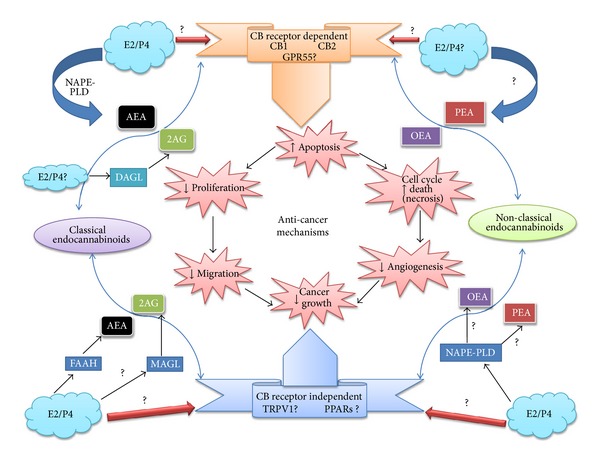Figure 5.

Known and putative interactions between gonadal sex steroids and the endocannabinoid system in sex hormone-dependent cancers. Endocannabinoid synthesis occurs through the actions of specific enzymes (blue boxes and broad arrows) through enzymatic hydrolysis of membrane specific NArPE lipid precursors. The role of the sex steroid hormones oestradiol (E2) and progesterone (P4) (blue clouds) is only speculative. The classical (anandamide (AEA) and 2-arachidonoylglycerol (2-AG)) and nonclassical endocannabinoids (N-oleoylethanolamine (OEA) and N-palmitoylethanolamine (PEA)) independently or collectively bind at both classical (CB1, CB2, and GPR55) and nonclassical (TRPV1 and PPAR) receptors (ribbons) to affect anticancer mechanisms (pink starbursts in the centre of the figure), which may be linked (arrows) or may not be linked to each other, but all result in reduced cancer cell mass. Known interactions between sex steroid hormones and the endocannabinoid system in the anticancer mechanisms are shown, whereas speculative or unknown interactions are indicated by the presence of a question mark. Up and down arrows indicate either an increase or decrease in the activity of that particular anticancer mechanism.
